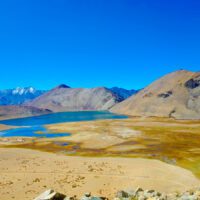
The Stillness That Shapes Ladakh’s Soul By Elena Marlowe Introduction: A Land Where Silence Breathes Arrival into a Different Rhythm When one first arrives in Ladakh, it is not the sights but the silence that overwhelms the senses. The descent into Leh’s small airport, with Himalayan ridges glinting in the morning light, feels less like stepping into a place than into a pause. The air is thin, the heart beats faster, yet everything around seems slowed, suspended in a stillness that whispers of peace and Ladakh peace. In a world where cities roar and clocks chase us forward, here time loosens its grip. This sensation—the absence of hurry, the abundance […]
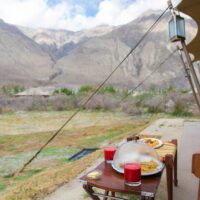
Meals That Bind: Evening Fires as Social Compass Dal, Rice, and Tsampa: High-Altitude Staples Evening in Ladakh’s trekking camps always carried the promise of warmth, not only from the fire but from the bowls that passed from hand to hand. At nearly four thousand meters, a simple plate of dal and rice transforms into more than nutrition; it becomes a ceremony. Lentils simmered slowly in dented pots, their steam mingling with the scent of yak dung fires, announced the end of a long day of walking. Rice, sometimes carried in sacks on the backs of ponies, was measured carefully so that every member of the group received their share. Tsampa, […]
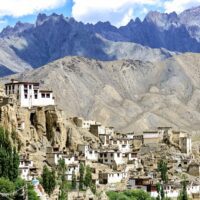
Walking the Quiet Pathways of Ladakh’s Forgotten Valleys By Elena Marlowe Introduction: A Journey Beyond Maps Where Silence Becomes the First Companion There are landscapes that cannot be reduced to contour lines or tidy distances on a trekking map. The Lamayuru to Alchi trek belongs to this realm. It begins at the windswept courtyard of Lamayuru monastery, where ancient chants slip across the stone courtyards, and ends in the dim-lit fresco halls of Alchi, whose murals glow like whispers from another century. Between these two monasteries lies a path less walked—four days that bend around high passes, rivers, and villages that survive more on rhythm than on hurry. This is […]

Through Villages and Passes: A Three-Day Journey Across Sham Valley By Elena Marlowe Introduction: Where the Valley Opens Like a Whisper The First Glimpse of Sham Valley Arriving in Ladakh, one feels the altitude before the mind can catch up with the landscape. The air is thinner, lighter, almost translucent, and the mountains rise like silent sentinels above the Indus. Among the many treks that tempt travelers here, the Sham Valley Trek is known affectionately as the “Baby Trek.” Yet, for all its simplicity, it carries a depth that lingers long after the final step. This three-day journey through Ladakhi villages and passes is not simply about crossing distances; it […]
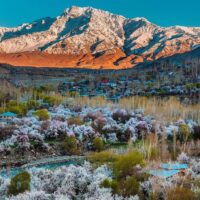
Springtime Journeys Through Ladakh’s Blossoming Valleys By Elena Marlowe Introduction: When Apricot Blossoms Whisper to the Himalayas The First Petals of Spring There is a certain hush that falls upon Ladakh in March, as if the mountains themselves are holding their breath. Along the Indus River, where villages sit like pearls strung across the high desert, apricot trees begin to reveal their tender blossoms. The transformation is sudden and almost theatrical: one week the branches remain bare and unyielding, the next they are dressed in soft shades of white and pink. For those who journey here, the effect is intoxicating, a reminder that even in a land defined by its […]
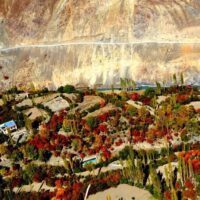
A Golden Season on the Roads of Ladakh By Elena Marlowe Introduction: When the Mountains Wear Autumn’s Cloak There is a moment in October when the Himalayas seem to exhale a softer breath. The harsh light of summer gives way to a glow that feels almost painterly, as though each valley has been brushed with shades of gold and copper. Driving through Ladakh during this fleeting season is not merely a journey from one place to another; it is an immersion into landscapes transformed by autumn’s hand. Trees along the rivers shimmer with amber leaves, the air grows crisp, and monasteries stand silent under skies that are at once endless […]

Running Thin Air — Inside the Ladakh Marathon 2025 At over 3,500 meters above sea level, every breath counts. Here’s your beautiful, practical guide to the six courses, how to prepare, and one intimate finisher story from the high Himalayas. Why it’s special: Ladakh Marathon is among the world’s highest-altitude road races. Expect crisp mornings, big skies, prayer flags, and climbs that test both legs and lungs. The event typically unfolds across multiple categories over a long weekend centered on Leh. Acclimatization is essential: Arrive in Leh early (5–7 days is common) to help your body adapt. Respect the altitude: Hydrate, protect from sun and wind, pace conservatively, and listen […]

Echoes of Tradition in the High Himalayas — Ladakh Festival 2025 Complete Schedule (Days 1–4) Every time, venue, and highlight — nothing omitted. Use this page to plan your festival days in Leh. 📅 Day 1 — Sunday, 21 September 2025 Do not miss: Cultural Parade, Inaugural Ceremony, “ERA OF ECHOES” Live, Celestial Journey. Time Programme Venue / Notes 11:00 AM From Ruins to Revival — ASI Conservation & Archival Treasures Exhibition Leh Palace 12:00 PM onwards (till 10:00 PM) Exhibition of Handicraft / Handlooms / Cuisines / CHANG-KHANG; Live skills: pottery, basketry, shoe making, etc. Eco Park, Leh 02:30 PM The Ladakh Culture Parade — dignitaries, guests, monks, tourists, […]

Discover the Vibrant Spirit of the Ladakh Zanskar Festival 2025 Step into the timeless world of Zanskar, where culture, heritage, and breathtaking landscapes meet. The Zanskar Festival is more than just an event — it’s a celebration of identity, tradition, and community spirit. Experience two unforgettable days of dances, rituals, and festivities in the heart of Ladakh. 10th Edition of the Ladakh Zanskar Festival 2025 Theme: “Celebrating and Showcasing the Rich Cultural Heritage of Zanskar” Dates: 20th & 21st September 2025 Venue: Sani, Zanskar – Ladakh Time: 10:30 AM onwards The Ladakh Zanskar Festival 2025 is back with its grand 10th edition, promising an unforgettable cultural journey into the heart […]
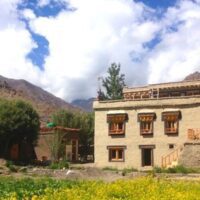
Living with Ladakhi Families in the High Himalayas By Elena Marlowe Arriving in Leh: The Gateway to Homestay Adventures First Impressions of Leh’s Old Town The airplane descended over a plateau of ochre mountains, their craggy ridges glowing beneath a startling blue sky. When I first stepped off the plane in Leh, the thinness of the air stole my breath. It wasn’t just altitude—it was awe. The town revealed itself in layers: prayer flags strung across alleyways, whitewashed stupas leaning against rocky slopes, and the quiet dignity of the Leh Palace perched high above. Unlike other Himalayan gateways, Leh’s old town felt intimate, almost secretive. Narrow lanes twisted past crumbling […]


